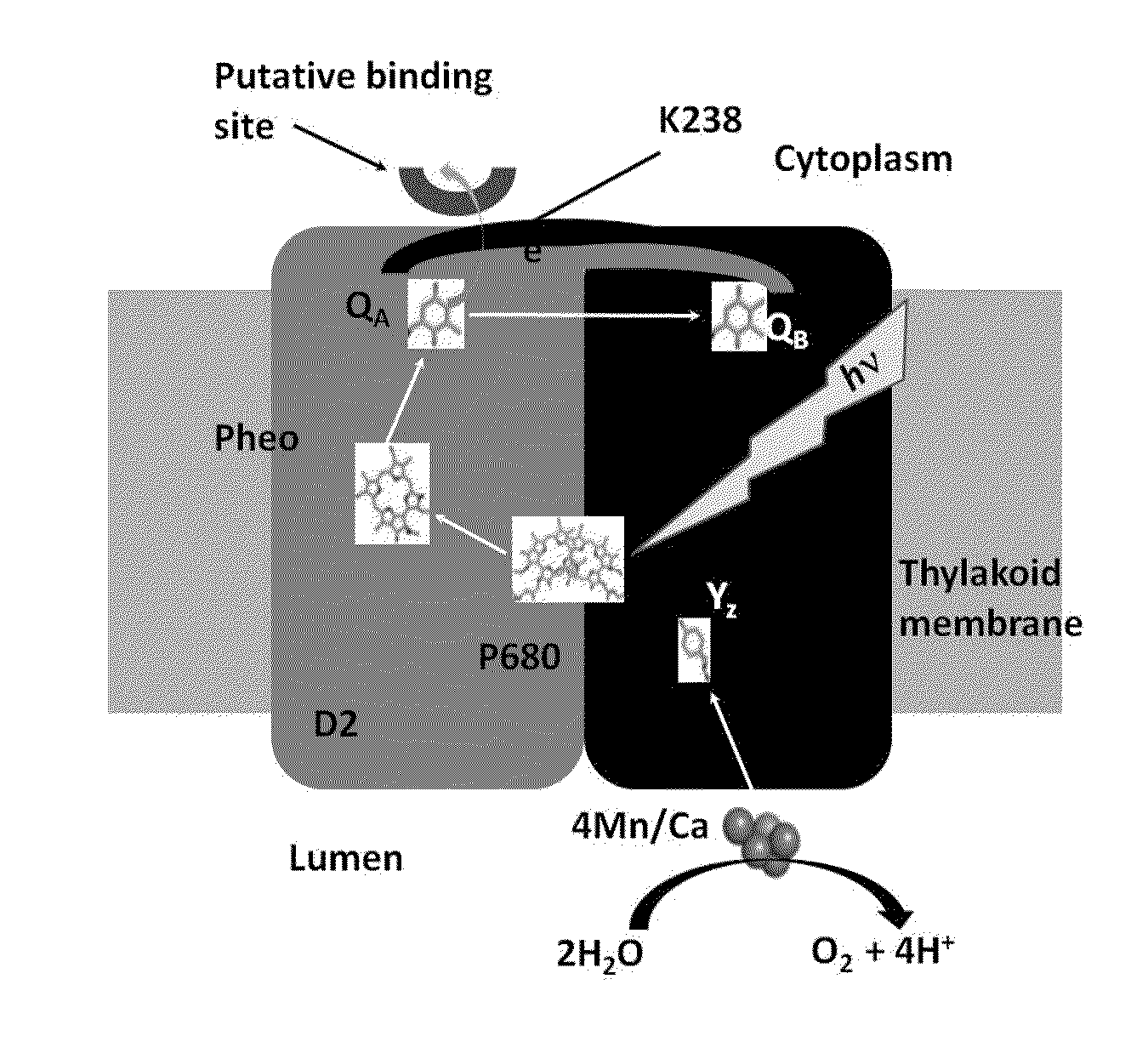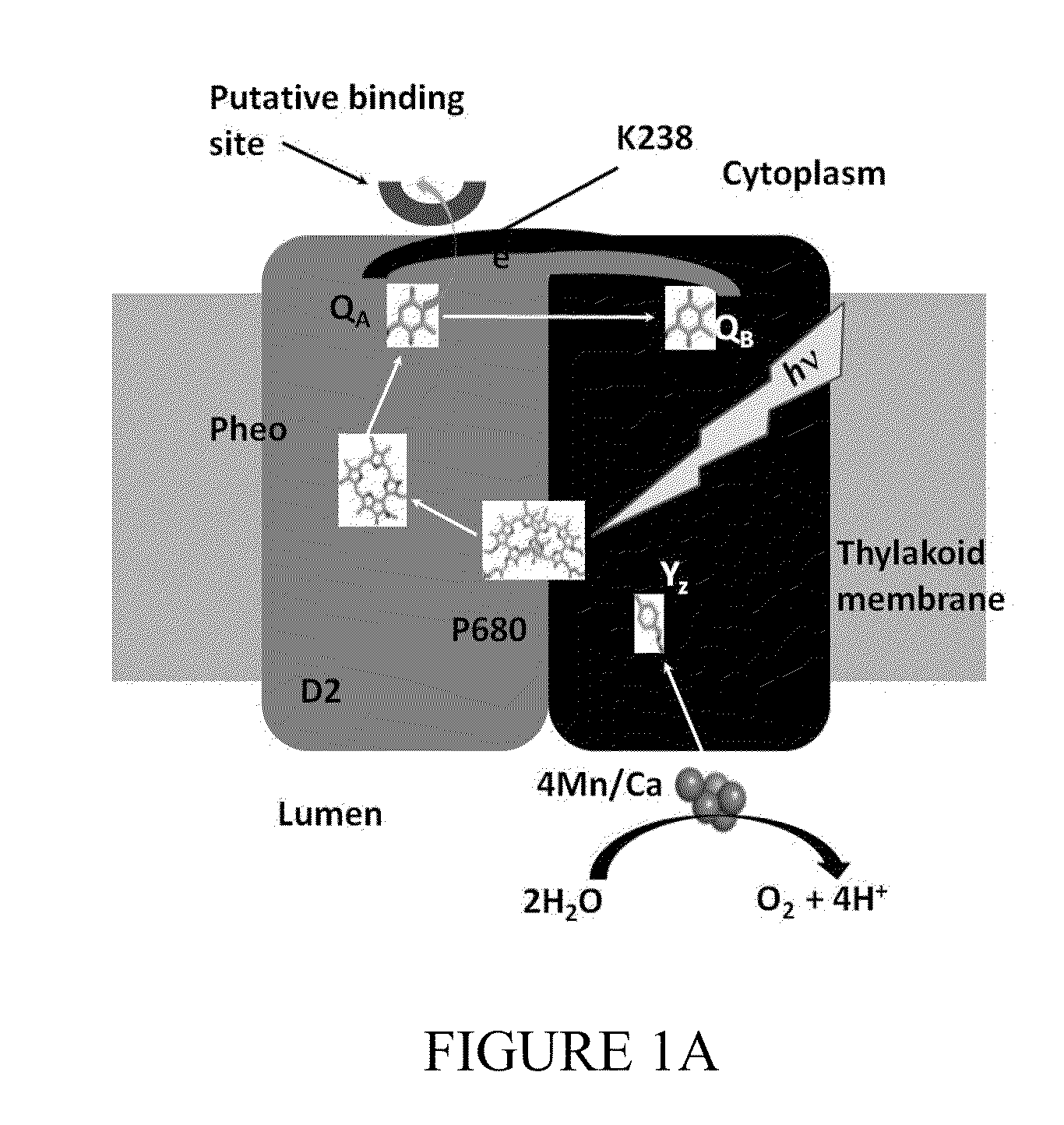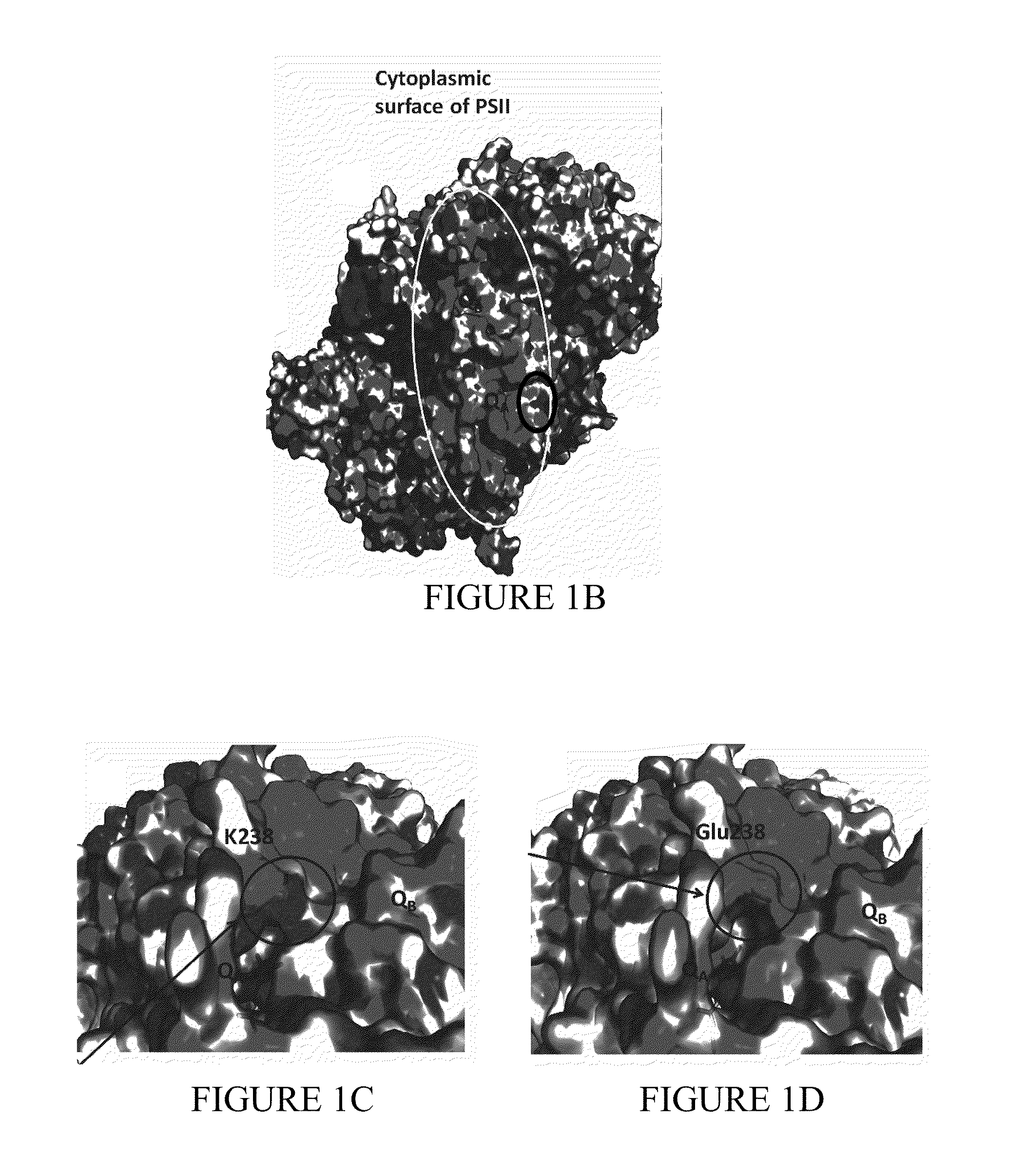Bio-engineered photosystems
a bio-engineered and photosystem technology, applied in the field of bio-engineered photosystems, can solve the problems of limited use of biological materials for energy production, methods and systems that utilize principles, and relatively short functional life of natural biological materials, and achieve the effect of increasing stability against photodamag
- Summary
- Abstract
- Description
- Claims
- Application Information
AI Technical Summary
Benefits of technology
Problems solved by technology
Method used
Image
Examples
example 1
In Silico Design of the Electron Conduit
[0213]PSII performs linear electron transfer from the oxygen evolving complex (OEC) to the secondary acceptor, QB. The redox active components from YZ to QB are embedded within the D1 and D2 proteins, while the OEC is bound to the luminal face of PSII. The bacterial reaction center of Rhodobacter (Rb). sphaeroides (bRC) shares many physical and functional similarities with PSII. However, unlike PSII, the bRC serves as a component of a cyclic electron transfer system that contains a conduit for electron transfer donation from soluble cytochrome c2 (cc2) to the oxidized donor, P860+. The binding of cc2 to the bRC has been studied in the past and the binding site has been determined by X-ray crystallography. The cc2 binding site has a significant negative electrostatic potential which is complementary to the positive electrostatic potential of the cc2 surface. The binding affinity of cc2 to the bRC has been estimated to be on the order of 0.1-1 μ...
example 2
Engineering and Characterization of the Electron Conduit
[0215]A. Site-specific mutagenesis at the D1-Lys238 site. The cyanobacterium Synechocystis sp. PCC 6803 (Syn), is amenable to site-specific mutagenesis and photoautotrophic / heterotrophic selection procedures. It contains three copies of the psbA gene encoding the D1 protein. In the TD34 strain, each of the three psbA genes have been replaced by antibiotic resistance cassettes This enables the replacement of a single cassette with a wt or mutated copy of psbA, using heterologous recombination. The resulting mutants can either be grown on glucose or photoautotrophically. Three different mutations were introduced into the psbA3 gene D1-Lys238 site: Ala, Glu and Leu. Each of the mutations was verified by PCR, restriction enzyme cleavage, and DNA sequencing (FIGS. 3A and B). The mutated genes were introduced into the TD34 strain and the resulting transgenic strains were then grown photoautotrophically in the presence of the remainin...
example 3
Electron Transfer to Cytochrome c Protects the D1 Protein
[0219]The possibility that the engineered electron transfer conduit could be damaging to PSII was considered. Possible photodamage was initially assessed in the strains by comparing the disappearance rate of the D1 protein 32 kDa band when isolated thylakoids are illuminated. Under such conditions, the degradation of the damaged D1 is significantly inhibited resulting with the crosslinking of the D1 to other PSII proteins, and the disappearance of the corresponding band at 32 kDa. When thylakoids obtained from the RSS or Glu strains were subjected to light, it was found that the 32 kDa D1 band gradually diminished as the D1 was crosslinked at the same rate (FIGS. 9 A and B and FIG. 10). A comparison of the photodamage that occurs when RSS or Glu thylakoid membranes are illuminated either with or without oxidized or reduced cc was then performed. It was found that when incubated with oxidized cc, the D1 protein in thylakoid mem...
PUM
| Property | Measurement | Unit |
|---|---|---|
| concentration | aaaaa | aaaaa |
| water-soluble | aaaaa | aaaaa |
| energy production | aaaaa | aaaaa |
Abstract
Description
Claims
Application Information
 Login to View More
Login to View More - R&D
- Intellectual Property
- Life Sciences
- Materials
- Tech Scout
- Unparalleled Data Quality
- Higher Quality Content
- 60% Fewer Hallucinations
Browse by: Latest US Patents, China's latest patents, Technical Efficacy Thesaurus, Application Domain, Technology Topic, Popular Technical Reports.
© 2025 PatSnap. All rights reserved.Legal|Privacy policy|Modern Slavery Act Transparency Statement|Sitemap|About US| Contact US: help@patsnap.com



